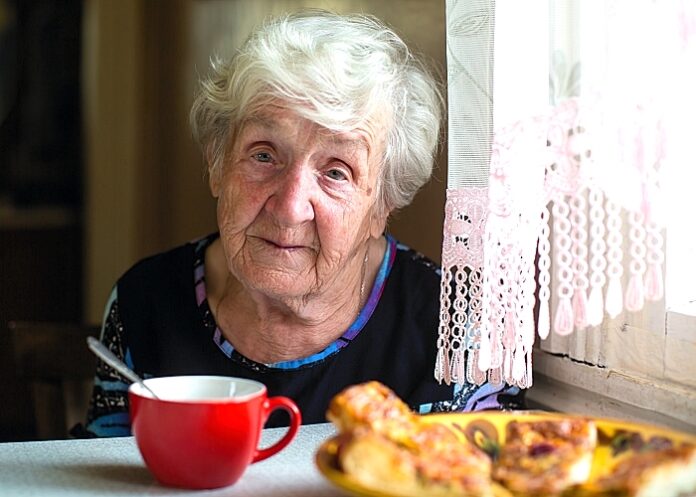Eating alone may contribute to an increased risk of heart disease in older women and is strongly correlated with the prevalence of angina, found a study in Menopause, the journal of The North American Menopause Society (NAMS).
As part of the overall effort to reduce the incidence of CVD, there has been a growing awareness of healthy eating habits; however, the importance of having an eating companion has been largely overlooked in previous studies.
Recent changes in society have meant that more people than ever are eating alone. Some of the primary reasons include a rise in the number of single-person households. Social distancing protocols introduced in response to the COVID-19 pandemic have further restricted eating meals with others. Additionally, mobile platforms for food delivery services have become more popular, further motivating people to eat alone.
With more people eating alone, health concerns have been raised. A previous study reported that a higher frequency of eating alone is associated with a higher risk of abdominal obesity and elevated blood pressure. When eating alone, people tend to eat faster, which often leads to increases in body mass index, waist circumference, blood pressure, and blood lipid levels, all of which can increase the risk of metabolic syndrome and CVD.
Eating alone also can affect mental health and has been reported as a risk factor for depression, which is also linked to an increased risk of CVD. Although these findings suggest that eating alone is a risk factor for CVD in older women, few studies have investigated the relationship between eating alone and the prevalence of CVD.
Researchers in this study involving nearly 600 menopausal women over 65 sought to compare health behaviours and nutritional status between older women eating alone and those eating with others, and to investigate the relationship between eating alone and the prevalence of CVD and its risk factors in older women.
On the basis of the results of this study, researchers concluded that older
women who ate along had poorer nutritional knowledge and intake. More specifically, it was found they also had lower intakes of energy, carbohydrates, dietary fibre, sodium, and potassium than those who ate with others. In addition, they were 2.58 times more likely to have angina, chest pain caused by reduced blood flow to the heart and a symptom of coronary artery disease.
These results suggest the value of nutrition education and CVD screening for older women who mainly eat alone.
“This study shows that older women who eat alone are more likely to have symptomatic heart disease. They are also more likely to be widowed and to have lower incomes and poorer nutritional intake. These results are not surprising given that lower socioeconomic status and social isolation contribute to lower quality of life, greater rates of depression, and poorer health. Given that women live longer than men, finding ways for older women who are socially isolated to engage and create meaningful social ties may not only improve their nutrition but also their overall health while simultaneously reducing healthcare costs,” said Dr Stephanie Faubion, NAMS medical director.
Study details
Association between eating alone and cardiovascular diseases in elderly women
Han-Gyo Choi, Hye-Jin Kim, Seok-Jung Kang
Published in Menopause on 1 November 2021
Abstract
Objective
To investigate differences in health behaviours, nutritional status, and the likelihood of having cardiovascular diseases and its risk factors according to the presence of an eating companion in older women.
Methods
Using 2016 Korean National Health and Nutrition Examination Survey VII-1 data, 590 menopausal women aged ≥65 years were analysed in this cross-sectional study. Participants who ate more than two meals a day alone were assigned to an eating-alone (EA) group and those who ate more than two meals a day with others were assigned to an eating-with-others (EO) group. Complex-samples general linear analysis, t tests, and logistic regression were used for the analysis of the data.
Results
Awareness of nutrition labels (P = 0.012), using of nutrition labels (P = 0.014), and impact of nutrition labels (P = 0.016) were lower in the EA group than in the EO group. The intake of energy, carbohydrates, dietary fiber, sodium, and potassium was lower in the EA group than in the EO group (P < 0.05). The likelihood of having angina was 2.58 times higher in the EA group than in the EO group (95% CI, 1.20-5.55).
Conclusions
Older women who ate alone had poorer nutritional knowledge and intake. In addition, eating alone in older women was strongly associated with the prevalence of angina. Thus, it is necessary to consider nutrition education and cardiovascular disease screening for older women who mainly eat alone.
See more from MedicalBrief archives:
Loneliness links to poor heart outcomes and doubled mortality risk
Experts urge action to reduce global burden of cardiovascular disease in women
Increased cardiac and stroke death risk in the first year after discontinuation of HT
Two decades of sedentary lifestyle doubles premature death risk
Mental disorders more common in people who live alone

